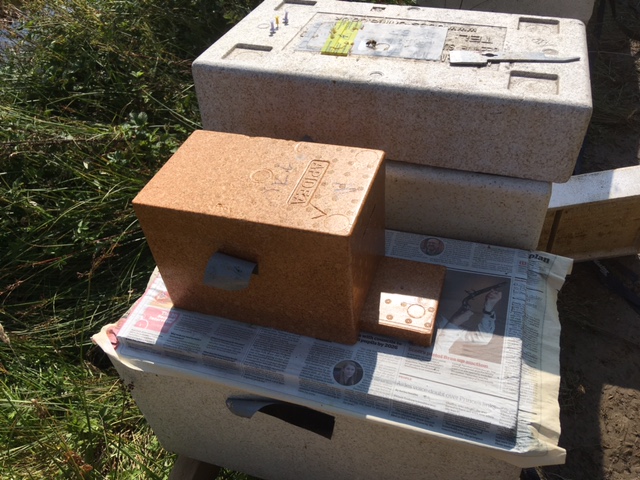By Jim Lindsay

We set up the Moorfoot mating apiary in spring of this year. The site, one thousand feet above sea level, has only three apiaries registered within a 10-kilometre radius. We set up hive stands to potentially support 20 drone supplying colonies, an optimistic projection perhaps, but the next few seasons will tell.

This spring was harsh so moving the drone supplying colonies to Moorfoot by mid-May did not risk inadvertently transporting non-Amm drones from over-wintering Edinburgh and surrounding sites. Seven hybrid colonies were set up headed by Amm Colonsay- and Ochils-derived grafted queens. Moorfoot’s forage availability is normally two to three weeks behind the lowland Edinburgh areas so avid uptake of fondant and Candipolline continued well into June. Local forage supplied by snowdrops followed by mature willow, damson, cherry, hazel, hawthorn, rowan and sycamore trees did eventually kick in, and with the insertion of drone frames into the hives, this resulted in a veritable explosion of drone brood formation. A long wait for virgin Amm queens followed but fortunately John Durkacz supplied us with fifteen near- Amm queen cells from his near-native colonies by late summer. We set these up in apideas in a separate shady area. Twelve of these have mated so far, and we are in the process of uniting the mated queens to small three- and four-frame queenless colonies using the paper method. To date all the Apideas presented to the receiver colonies have been accepted. It remains for us to build up the colonies for overwintering and to assess the Amm status of the overwintered colonies next spring.
